Native Plant Design Fort Worth
Native Plant Design in Fort Worth
Native plant design uses Texas species evolved specifically for our region—plants that naturally occur in Cross Timbers and Blackland Prairie ecoregions, adapted to Fort Worth's clay soil and weather extremes over thousands of years, thriving without constant intervention once established. Most Fort Worth landscapes use plants from completely different climates—azaleas from Southeast, roses from cooler regions, tropical hibiscus barely surviving here, requiring constant water, fertilizer, pest control, babysitting just to stay alive. Native landscapes flip this—plants want to be here, evolved handling 105-degree summers and occasional 10-degree winters, clay soil they're built for, local pests and diseases they resist naturally, minimal care after establishment producing healthy beautiful landscapes. We design native plant landscapes all over Fort Worth—Fairmount bungalows with cottage-style native gardens, Tanglewood properties incorporating natives into traditional landscapes, Aledo new construction starting with native foundations, commercial properties reducing maintenance costs dramatically through native plantings. Native doesn't mean wild ugly overgrown—we create structured designed landscapes using native plants, proving Texas natives can look sophisticated and intentional, not accidental vacant lot aesthetics. These landscapes use 75% less water than traditional, basically zero fertilizer or pesticides, minimal maintenance once mature, support local wildlife including monarchs and native bees, cost less long-term while looking better and performing reliably.
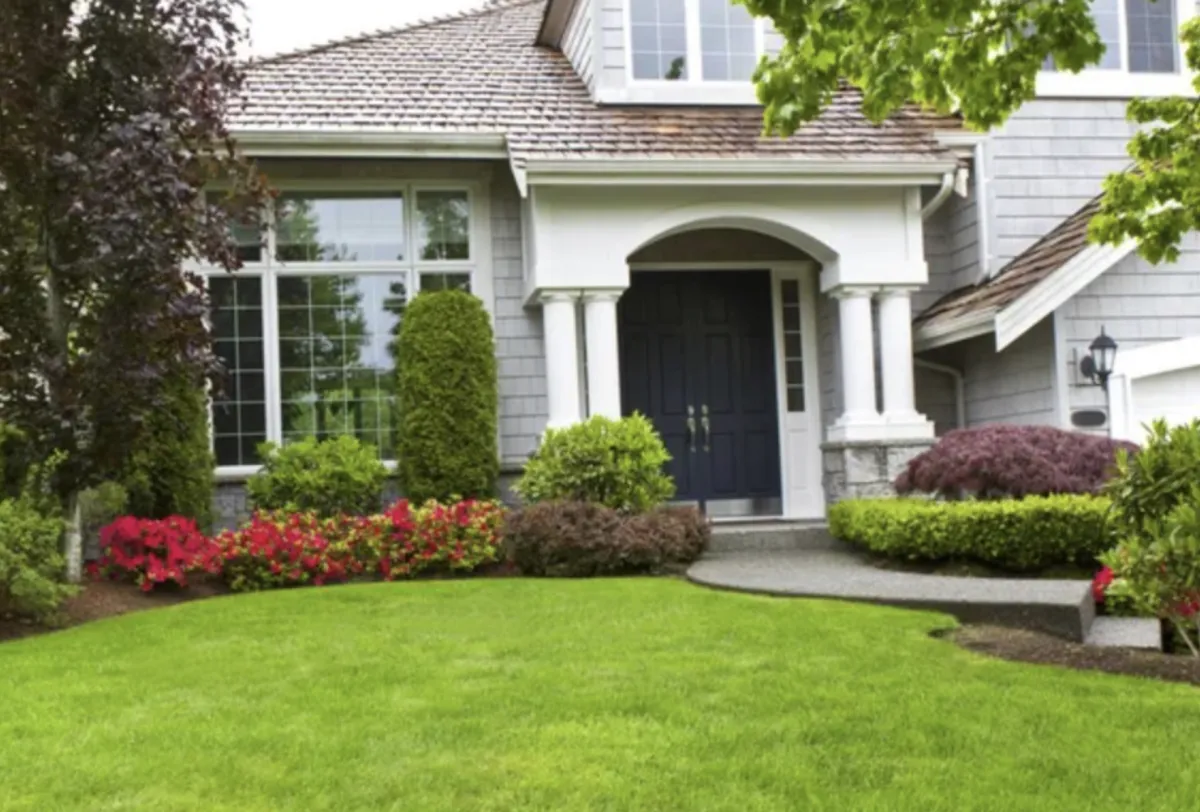
Understanding Fort Worth's Native Plant Communities

Cross Timbers ecoregion dominates western Fort Worth—post oak and blackjack oak savanna historically, mixed woodlands and grasslands, species adapted to sandy loam transitioning to clay, drought-tolerant plants handling variable moisture. We use Cross Timbers natives—post oak and chinkapin oak for trees, roughleaf dogwood and possumhaw holly understory, little bluestem and sideoats grama grasses, coreopsis and black-eyed Susan perennials.
Blackland Prairie historically covered eastern Fort Worth—tallgrass prairie on deep clay soil, dominated by big bluestem and indiangrass, spectacular wildflower diversity spring and fall, mostly plowed under for agriculture but remnants remain. We incorporate prairie species—big bluestem where space allows, smaller native grasses like little bluestem for residential scale, prairie wildflowers including bluebonnets, coneflowers, gayfeather, liatris.
Riparian zones along creeks and Trinity River—species tolerating periodic flooding and consistent moisture, sycamore, bald cypress, river birch, roughleaf dogwood, inland sea oats. We use riparian natives for consistently moist areas—creek beds, low spots, rain garden plantings, species adapted to Fort Worth riparian conditions.
Edge and transition zone plants—species thriving in disturbed areas, resilient pioneers, Mexican plum, cedar elm, Texas persimmon, redbud, tough adaptable natives handling urban conditions. We use edge species extensively—tough enough for harsh urban sites, attractive and functional, filling niches in designed landscapes.
Limestone outcrop species where relevant—western Fort Worth areas with limestone exposure, specialized plants adapted to thin alkaline soils, Texas smoke tree, evergreen sumac, twist-leaf yucca, rock rose. We incorporate limestone specialists appropriately—western properties with limestone, dry rocky areas, specialized niches.
Microhabitat recognition within properties—sunny dry areas, shaded moist zones, different conditions requiring different native plants, matching species to actual site conditions not forcing wrong plants into wrong places. We assess properties carefully—identifying microhabitats, selecting appropriate natives for each, right plant right place philosophy maximizing success.
Core Native Trees for Fort Worth Landscapes
Live oak as cornerstone tree—evergreen presence year-round, massive mature size requiring space, extremely long-lived, slow initial growth accelerating over time, iconic Texas tree. We use live oak extensively—properties with space for mature size, long-term investment, understanding 50+ year timeline to maturity, replacement for non-native oaks failing here.
Bur oak for large landscapes—deciduous native oak, massive acorns, excellent fall color, faster growing than live oak, very long-lived, tolerates clay and limestone. We specify bur oak—large properties, parkway trees, long-term shade investment, Fort Worth native performing reliably.
Cedar elm for tougher sites—extremely tough adaptable tree, small leaves creating fine texture, fall yellow color, tolerates drought, clay, compaction, abuse, excellent urban tree. We use cedar elm frequently—difficult sites, parking lots and streets, tough reliable native handling abuse, fast growth providing shade relatively quickly.
Texas redbud for understory and small spaces—spring magenta bloom spectacular, heart-shaped leaves, small tree 15-20 feet, understory in nature, shade tolerance, beautiful native accent. We incorporate redbuds—woodland edges, foundation trees, spring color, appropriate scale for residential landscapes.
Mexican plum as small ornamental tree—early spring white blooms before leaves, excellent fall color, small purple fruits, multi-trunk form, 15-20 feet mature, beautiful small native. We use Mexican plum—specimen trees, small yards, spring interest, wildlife value from fruits.
Possumhaw holly for berries and birds—deciduous holly with brilliant red berries persisting winter, small tree to large shrub, female plants for berries, male pollinator needed, incredible winter interest when leaves drop revealing berry-covered branches. We design possumhaw groupings—female plants for display, male nearby for pollination, winter focal points, birds devouring berries.
Texas ash for fall color—native ash species, excellent fall yellow to purple, faster growing, tough and adaptable, medium-large tree, alternative to declining non-native ashes. We specify Texas ash—fall color, reliable native performance, appropriate for Fort Worth conditions.
Chinkapin oak for alkaline soils—native white oak, excellent for limestone areas, beautiful fall color, acorns feeding wildlife, medium-large tree, tolerates alkaline conditions many oaks won't. We use chinkapin oak—western Fort Worth limestone areas, alkaline soil situations, reliable native oak alternative.
Native Shrubs and Subshrubs
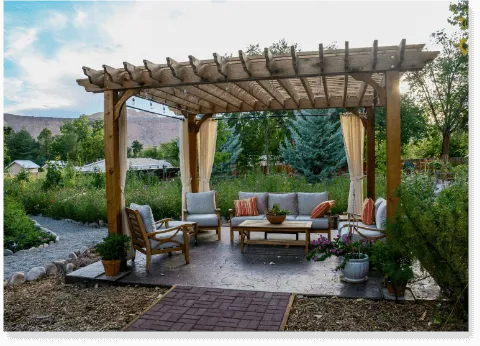
Yaupon holly absolutely bulletproof—evergreen shrub 8-15 feet, dwarf varieties staying smaller, red berries on female plants, incredibly tough handling heat, drought, clay, shade or sun. We use yaupon extensively—foundation plantings, screening, massing, weeping form as specimen, most reliable native shrub for Fort Worth.
Flame acanthus for hummingbirds—orange tubular flowers spring through fall, hummingbird magnet, dies back in winter returning from roots, 3-4 feet tall and wide, loves heat and sun. We incorporate flame acanthus—hummingbird gardens, perennial borders, hot dry sites, spectacular summer color.
Texas sage for drought tolerance—silvery foliage, purple or pink flowers after rain, extremely drought-tolerant, 4-6 feet depending on variety, sun-loving tough native. We use Texas sage—hot dry exposures, water-conserving landscapes, foundation plantings in sun, various varieties with different flower colors.
Fragrant sumac as groundcover—low spreading native 3-4 feet tall, fragrant foliage when crushed, fall color, extremely tough, good erosion control. We use fragrant sumac—slopes, erosion control, low maintenance groundcover, tough sites.
Turk's cap in shade—shade-tolerant native, red tubular flowers attracting hummingbirds, spreading by underground runners, 3-4 feet tall, excellent for woodland gardens. We incorporate Turk's cap—shade gardens, woodland edges, hummingbird plantings, shade color option.
Cenizo (Texas ranger) for extreme drought—silver foliage, profuse purple blooms after rain, extremely drought-tolerant, 4-6 feet, various cultivars, excellent xeric landscapes. We use cenizo—extreme drought tolerance situations, silver foliage contrast, water-conserving designs.
Inland sea oats as large grass—graceful arching stems, flat oat-like seed heads, shade-tolerant native grass, 3-4 feet, spreads by rhizomes, beautiful movement. We plant inland sea oats—shade gardens, naturalistic sweeps, movement and texture, seed heads persisting through winter.
Wax myrtle for screening—evergreen large shrub to small tree, aromatic foliage, fast growing, excellent screening, 12-15 feet, native along Texas coast adapting well here. We use wax myrtle—screening applications, fast-growing evergreen, foundation plantings, excellent backdrop.
Native Perennials and Grasses
Gulf muhly grass for fall color—spectacular pink fall plumes, airy fine-textured grass, 2-3 feet tall and wide, full sun, incredible fall display. We incorporate Gulf muhly—fall interest, specimen clumps, massed plantings, showstopper October and November.
Little bluestem as foundation grass—prairie grass, blue-green summer color turning orange-red fall, 2-3 feet, upright clumping form, seed heads feeding birds. We use little bluestem extensively—prairie gardens, native grass massing, fall color, sustainable turf alternative.
Black-eyed Susan for summer color—golden yellow daisies summer through fall, 2-3 feet, full sun, self-seeding, classic prairie wildflower. We plant black-eyed Susan—perennial color, cottage gardens, native meadows, reliable summer bloom.
Purple coneflower (Echinacea) native—pink-purple daisy flowers, 2-3 feet, drought-tolerant once established, seed heads feeding goldfinches winter, medicinal plant. We incorporate purple coneflower—perennial borders, prairie plantings, pollinator gardens, long summer bloom.
Autumn sage blooming machine—salvias in various colors, red, pink, white, coral, blooming spring through fall, 2-3 feet, hummingbird and butterfly magnet, incredibly reliable. We use autumn sage extensively—perennial beds, hummingbird gardens, long bloom season, heat-loving native.
Cedar sage for shade—shade-tolerant salvia, fragrant foliage, blue or white flowers, 2-3 feet, spreading by runners, excellent woodland garden plant. We plant cedar sage—shade gardens, fragrant foliage, woodland edges, shade-blooming option.
Gregg's mistflower for fall butterflies—blue-purple flowers fall, butterfly magnet especially monarchs, 2-3 feet, spreads aggressively in good conditions, critical late-season nectar. We incorporate mistflower—fall pollinator gardens, monarch way-stations, blue fall color, spreads filling spaces.
Sideoats grama beautiful grass—named for seed heads hanging to one side, 2-3 feet, clumping warm-season grass, excellent for naturalistic plantings. We use sideoats grama—native grass gardens, naturalistic sweeps, erosion control, bird food from seeds.
Zexmenia as tough groundcover—sprawling yellow daisy flowers, 1-2 feet, spreads rapidly, full sun, incredibly tough, good groundcover or filler. We use zexmenia—tough sites, fast coverage, informal areas, heat and drought tolerance extreme.
Native Plant Establishment and Care
First year watering absolutely critical—natives establishing root systems, need consistent moisture during establishment, weekly deep watering unless rainfall adequate, patience understanding slow top growth. We emphasize establishment care—adequate moisture first season, deep infrequent watering encouraging deep roots, understanding natives investing energy underground initially.
Proper planting techniques for success—planting high in Fort Worth clay not deep, root flare visible, no amendments in planting holes, backfill with native clay, mulch layer 2-3 inches, avoiding common mistakes killing plants. We plant natives correctly—high in clay, proper depth, no buried root flares, techniques ensuring drainage and survival.
Mulching retains moisture and moderates temperature—2-3 inch natural mulch layer, not piled against stems, refresh annually, cedar or hardwood mulch appropriate, helping establishment significantly. We mulch all native plantings—moisture retention, temperature moderation, weed suppression, organic matter addition over time.
Resist fertilizing new natives—native plants adapted to lean soils, excessive fertility promotes weak growth and disease, minimal to no fertilizer once established, maybe light organic application during establishment if growth extremely poor. We don't fertilize natives routinely—adapted to lean conditions, excessive fertility counterproductive, soil building with compost adequate.
Pruning native plants appropriately—many natives benefit from late winter cutback, removing winter-killed stems, shaping, timing by species, understanding natural growth habits. We prune natives correctly—flame acanthus and salvias cut back late winter, grasses cut early spring, respecting natural forms not shearing into unnatural shapes.
Patience during establishment—"first year sleep, second year creep, third year leap" describes native establishment accurately, year one focuses on roots, visible growth comes years two and three, long-term thinking required. We educate about establishment timeline—patience during apparent slow growth, understanding root development critical, performance improving dramatically year three onward.
Designing with Native Plants Successfully
Layered plantings mimic natural communities—canopy trees, understory trees, shrub layer, perennials and grasses, groundcovers, complete vertical structure like natural ecosystems. We design in layers—varied heights, multiple species filling niches, creating habitat and aesthetics simultaneously, mimicking natural forest edge or prairie structure.
Massing creates impact—grouping native plants in sweeps and drifts, three or five or more of species together, avoiding single specimens scattered randomly, masses reading clearly from distance. We mass natives—groups of three minimum, sweeps of grasses, drifts of perennials, design principle creating strong visual impact.
Repetition throughout design—repeating key natives in multiple locations, creating rhythm and unity, visual threads connecting spaces, avoiding chaotic collections of single plants. We repeat plants deliberately—flame acanthus appearing in three locations, little bluestem massed in multiple areas, repetition creating cohesion.
Seasonal interest progression—spring redbud and bluebonnets, summer black-eyed Susan and coneflowers, fall muhly grass and mistflower, winter possumhaw berries and evergreen structure. We design for four seasons—bloom progression, fall color, winter interest, year-round attractive landscapes.
Textural variety and contrast—fine-textured grasses against bold coneflowers, yaupon holly evergreen mass contrasting with deciduous trees, varied leaf sizes and forms, visual interest beyond just flowers. We combine textures thoughtfully—fine, medium, coarse, contrasts creating interest, avoiding monotonous sameness.
Structured versus naturalistic approaches—formal designs possible with native plants, structured beds with massed plantings, or looser naturalistic prairie and woodland styles, natives working in various design aesthetics. We adapt native designs to contexts—formal traditional landscapes using natives in structured ways, naturalistic designs for appropriate properties, flexibility proving natives aren't just wild meadows.
Color palette considerations—hot colors like orange flame acanthus and yellow black-eyed Susan, cool blues and purples from salvias and asters, intentional color schemes, avoiding chaotic rainbows. We design color thoughtfully—harmonious palettes, color progression through seasons, intentional schemes not accidental collections.
Native Plants for Specific Situations
Shade gardens—cedar elm canopy, possumhaw understory, yaupon holly shrub layer, Turk's cap and cedar sage perennials, inland sea oats grass, fragrant sumac groundcover, complete shade plant palette. We design native shade gardens—species adapted to dappled woodland light, beautiful successful plantings without struggling sun-lovers.
Full sun prairie-style—little bluestem grass foundation, black-eyed Susan and purple coneflower perennials, autumn sage for hummingbirds, zexmenia filling spaces, prairie aesthetic. We create prairie gardens—full sun native plantings, naturalistic aesthetics, low maintenance once established, water-conserving sustainable.
Clay soil specialists—yaupon holly, cedar elm, Texas ash, inland sea oats, basically most Fort Worth natives adapted to clay naturally, working with soil not fighting it. We select clay-tolerant natives—naturally adapted, thriving without extensive amendment, accepting clay reality.
Limestone outcrops—Texas smoke tree, evergreen sumac, twist-leaf yucca, Rock rose, specialized plants for thin alkaline rocky soils. We plant limestone specialists—western Fort Worth rocky areas, dry shallow soils, appropriate adaptations.
Erosion control and slopes—fragrant sumac spreading, inland sea oats roots stabilizing, little bluestem and sideoats grama grasses, native plant roots preventing erosion naturally. We design erosion control plantings—appropriate natives, root systems stabilizing, beautiful functional solutions.
Rain gardens and moist areas—bald cypress tolerating wet feet, possumhaw holly, inland sea oats, species handling periodic flooding and consistent moisture. We plant rain gardens—natives adapted to riparian conditions, handling wet and dry cycles, functional water management plantings.
Wildlife and pollinator focus—native milkweeds for monarchs, autumn sage and flame acanthus for hummingbirds, coneflower and black-eyed Susan for bees, possumhaw berries for birds, complete habitat approach. We design for wildlife deliberately—food sources, shelter, water, pesticide-free management, landscapes functioning as habitat.
Combining Natives with Adapted Non-Natives
Strategic non-native additions—well-behaved plants from similar climates complementing natives, expanding bloom times and design options, crape myrtle for summer color, rosemary for herbs, carefully selected additions. We supplement natives thoughtfully—adapted non-natives filling gaps, extending seasons, expanding palette while maintaining sustainability focus.
Maintaining native dominance—natives comprising 60-80% of plant palette, adapted non-natives supplementing not replacing, native foundation with thoughtful additions, balance maintaining ecological benefits while expanding aesthetics. We design native-dominated landscapes—core of Texas natives, adapted plants supplementing, maintaining native benefits.
Avoiding aggressive non-natives—excluding invasive species, avoiding plants naturalizing and displacing natives, responsible plant selection, ligustrum, nandina, King Ranch bluestem excluded despite common use. We eliminate invasives—known problem plants excluded entirely, responsible selections protecting natural areas from landscape escapes.
Transitioning existing landscapes—adding natives gradually, replacing failing non-natives with natives, strategic conversion over time, avoiding complete removal unless necessary. We help transitioning—incorporating natives into existing landscapes, gradual conversion, working with established elements, practical evolution toward native emphasis.
Sourcing Native Plants in Fort Worth
Local native plant nurseries—Archie's Gardenland native section, Redenta's Garden, Rohde's Nursery native stock, locally-grown plants adapted to Fort Worth specifically, supporting businesses specializing in natives. We source locally—Fort Worth area nurseries, Texas-grown stock, local genetics, plants proven in our conditions.
Native plant sales and events—Fort Worth Botanic Garden plant sales, Native Plant Society of Texas Fort Worth chapter sales, spring and fall events, excellent sources for unusual natives and local ecotypes. We attend sales—finding uncommon natives, supporting conservation organizations, connecting clients with events.
Genetic provenance matters—locally-sourced genetics adapted to Fort Worth conditions specifically, plants from similar latitudes and climates, avoiding Florida-grown "natives" with different adaptations. We emphasize local provenance—Texas-grown natives, appropriate genetics, regional adaptations, asking nurseries about plant sources.
Container sizes and costs—natives often available smaller and cheaper than traditional ornamentals, one-gallon natives establishing quickly, five-gallon for instant impact on key specimens, appropriate sizing balancing budget and timeline. We specify appropriate sizes—smaller natives for mass plantings establishing quickly, larger specimens for focal points, cost-effective native installations.
Seed sources for meadow plantings—Native American Seed, reputable Texas native seed companies, appropriate mixes for Fort Worth, understanding meadow establishment from seed. We source quality seed—Texas companies specializing in native seed, appropriate species mixes, successful meadow establishment.
Ready to design native plant landscape for your Fort Worth property—using plants that actually evolved here, thriving in our clay and heat, supporting monarchs and native bees, requiring fraction of typical water and maintenance? Let's create beautiful native landscapes—structured or naturalistic, traditional or prairie-style, proving Texas natives create sophisticated attractive sustainable landscapes. Native plant design for Fort Worth—working with nature not against it, landscapes that want to be here.
Retry
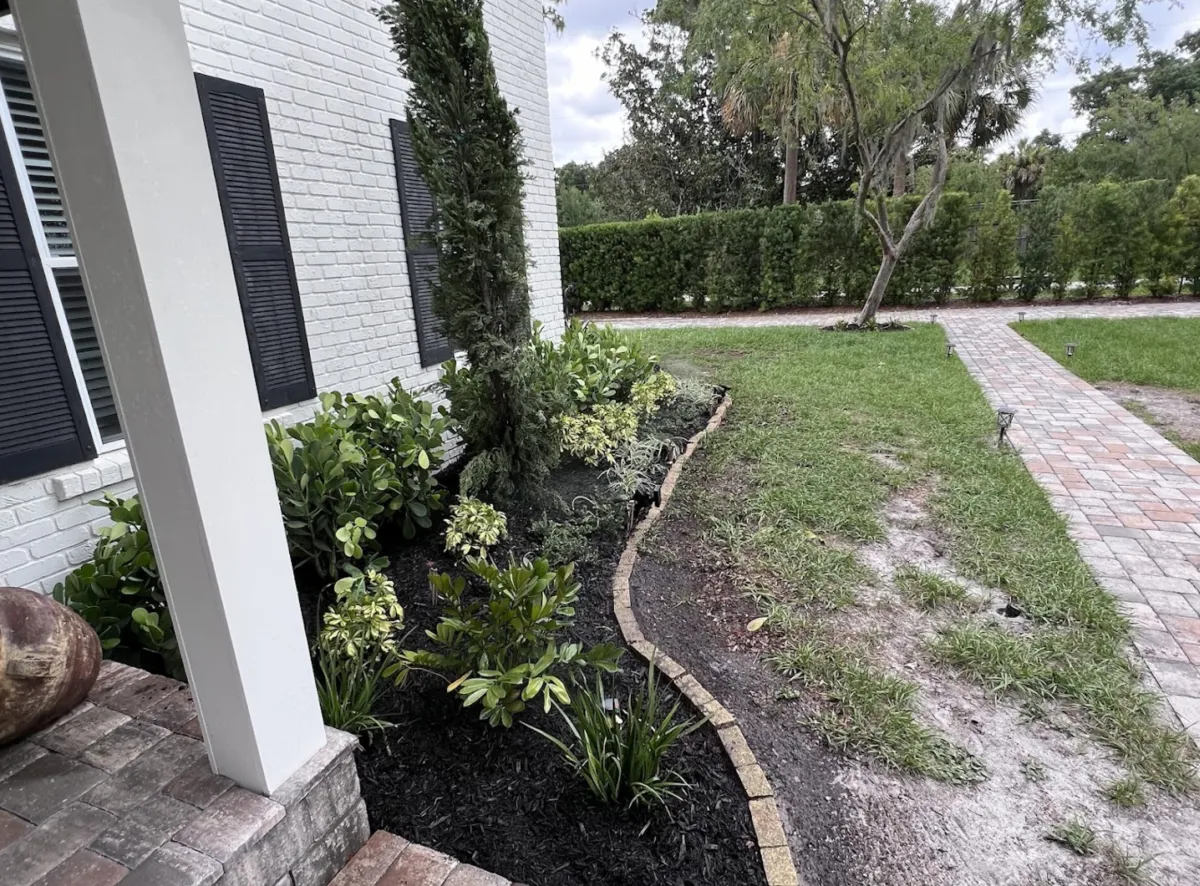

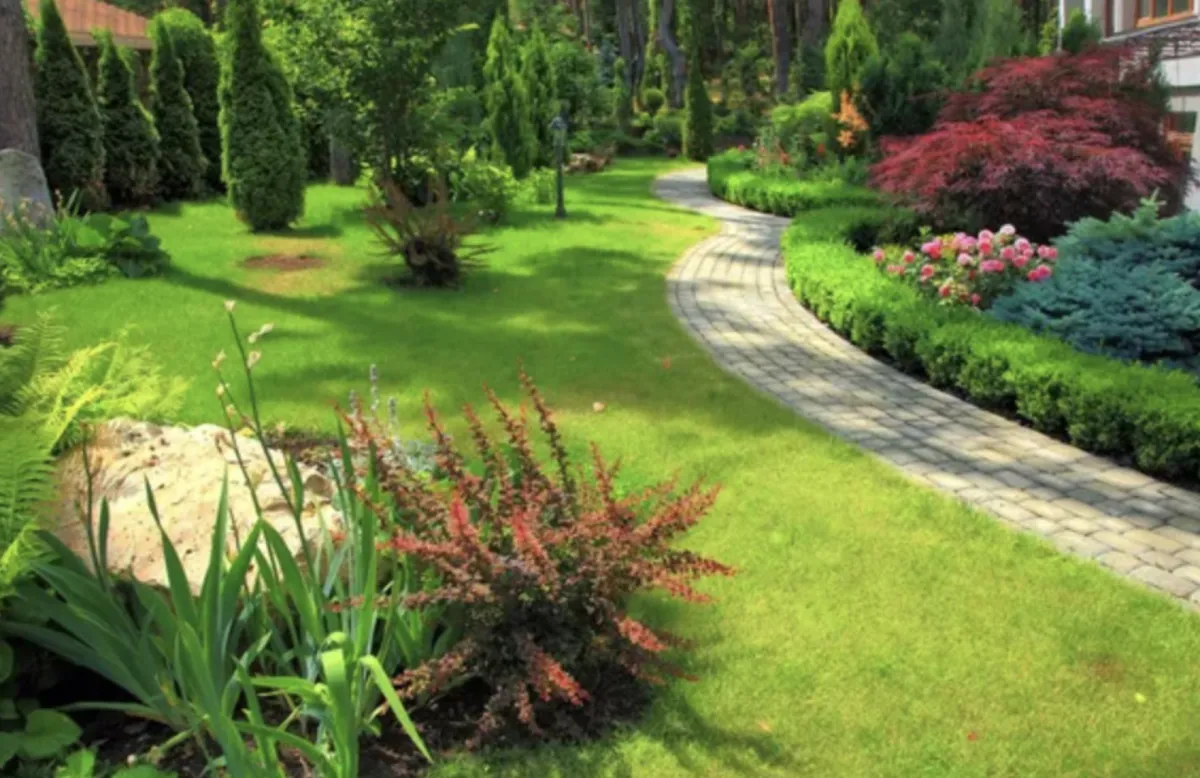

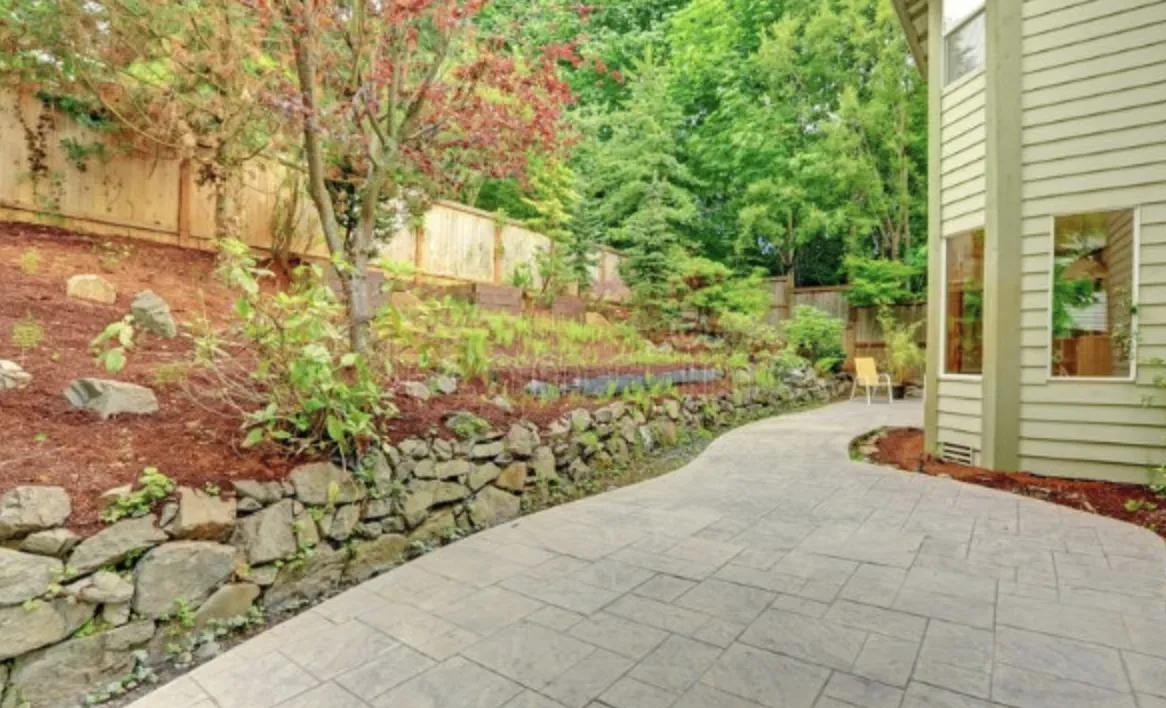

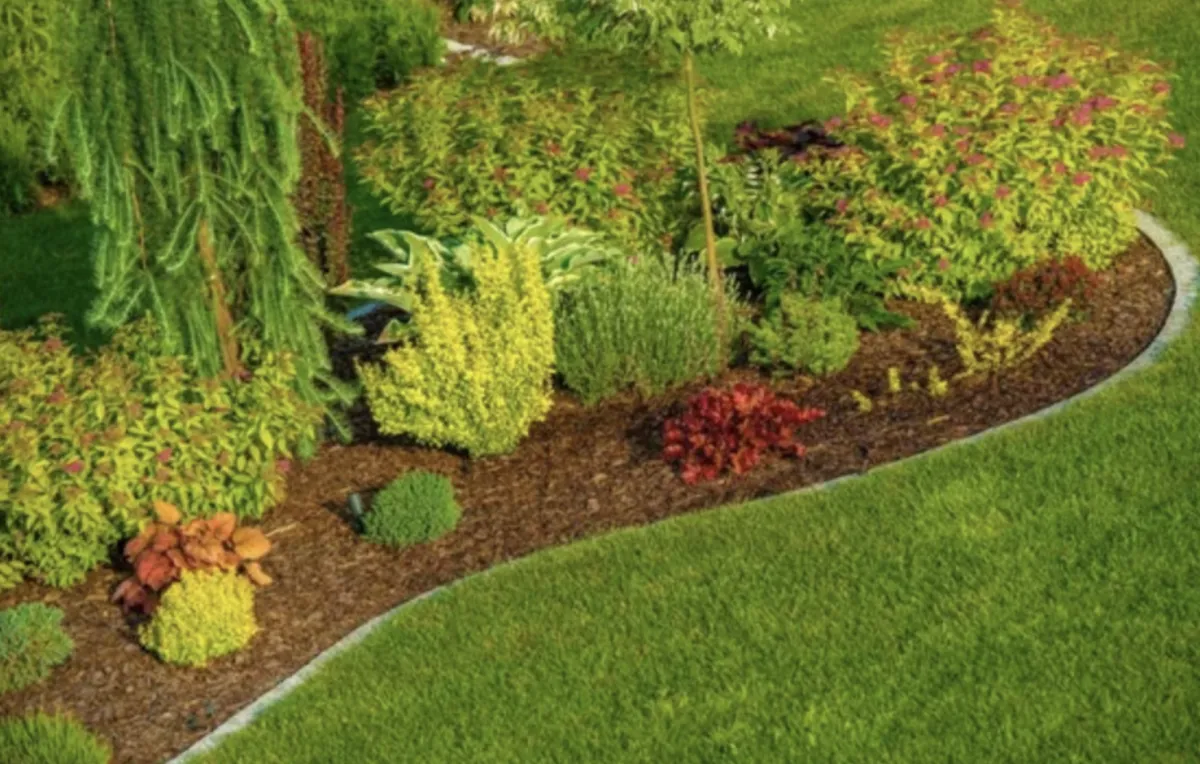

See What Our Customer Say About Us
Sarah M., Fort Worth, TX

“I can’t say enough good things about HF Landscape Design Fort Worth. They totally transformed our backyard into something out of a magazine — and they did it on time and within our budget. The team showed up early every day, cleaned up after themselves, and really listened to what we wanted. You can tell they actually care about the little details, not just getting the job done. Our neighbors keep stopping by asking who did the work — we tell everyone to call HF Landscape Design. Best decision we made for our home!”
Daniel R., Fort Worth, TX

“HF Landscape Design Fort Worth really blew us away. We had a plain front yard before, and now it looks like something you’d see in a design show. They helped pick the right plants for the Texas heat and even added lighting that makes the place glow at night. Super easy to talk to and very professional — they made the whole thing stress-free. We’d hire them again in a heartbeat.”
Megan & Tyler H., Fort Worth, TX

“Our backyard was just dirt and weeds before HF Landscape Design came in. Now it’s the spot where we spend every weekend with friends. They built a patio, added flower beds, and somehow made it all feel natural like it was always meant to be there. You can tell they love what they do — every detail was perfect. Highly recommend them to anyone in Fort Worth wanting a yard they’ll actually use.”
Get Professional Native Plant Design
Stop fighting Fort Worth conditions with landscapes requiring constant resources. Get professional native plant design that works naturally with North Texas climate while supporting local ecosystems.
Call (817) 580-3329 to schedule a native plant design consultation. We'll assess your property and create native plant landscapes thriving in Fort Worth with minimal maintenance.
Service Areas: Fort Worth, Tanglewood, Ridglea Hills, River Crest, Westover Hills, Berkeley, Monticello, Mistletoe Heights, and surrounding communities.
Frequently Asked Questions
What is the average cost of landscape design?
Landscape design costs in Fort Worth typically range from $2,000 to $8,000 depending on property size—project complexity—level of detail required. Simple front yard designs for smaller properties might run $1,500 to $3,000. Comprehensive landscape plans for larger properties with detailed planting plans—hardscape designs—irrigation layouts—lighting plans usually cost $5,000 to $10,000 or more. We typically credit design fees toward installation if you proceed with us for the work. Design-only services cost more since we're not recouping fees through installation. Most clients in areas like Tanglewood or Westover Hills invest in detailed designs because their properties warrant professional planning. Newer neighborhoods with simpler yards might need less extensive design work.
What does it cost for a landscape design?
Design fees depend on project scope and what you need included. Basic conceptual designs showing general layout—plant groupings—hardscape locations run $1,500 to $3,000 for typical residential properties. Detailed construction-level plans with exact plant specifications—hardscape dimensions—grading plans—irrigation zone maps cost $4,000 to $8,000 or higher for complex projects. Commercial landscape design involves additional complexity and typically costs more. We discuss your specific needs during initial consultation and provide design fee quotes based on actual scope. Design fees get credited toward installation when you hire us for the work. Fort Worth properties with challenging conditions—significant slopes—drainage issues—often need more detailed planning which affects design costs.
What is the difference between a landscape architect and a landscape designer?
Landscape architects have formal education—state licensing—ability to stamp engineering drawings for permits. They handle complex projects requiring grading engineering—structural calculations—commercial site development—regulatory compliance. Landscape designers focus on plant selection—aesthetic layout—residential design without engineering components. In Fort Worth, landscape architects are required for certain commercial projects—retaining walls over specific heights—projects needing engineered drainage solutions. Residential projects usually work fine with landscape designers unless you've got significant slope issues—major grading needs—structures requiring engineering stamps. Landscape architects cost more but bring technical expertise for complex projects. Most residential landscapes in neighborhoods like Arlington Heights or Ridglea work well with landscape designers. Larger estates or properties with serious site challenges benefit from landscape architectural services.
Why is landscape design so expensive?
Professional landscape design involves considerable time—expertise—detailed planning work. Designers spend hours on site assessment—measuring—analyzing drainage and sun patterns—researching plant options for specific conditions. Creating scaled plans requires CAD software skills—design knowledge—understanding of Fort Worth's climate and soil conditions. Good designers prevent expensive installation mistakes—plant failures—drainage problems that cost far more to fix later. You're paying for years of experience knowing what works in North Texas clay soil—which plants survive July heat—how to design irrigation zones efficiently. Design fees also cover revisions—client meetings—coordination with contractors during installation. Cheap or free designs often mean cookie-cutter plans—inexperienced designers—or design costs hidden in inflated installation prices. Professional design upfront saves money long-term by getting things right the first time.
What is the rule of 3 in landscaping?
The rule of three suggests planting in odd-numbered groups—typically three plants—creates more natural and visually appealing arrangements than even numbers. Three plants or features create triangular compositions—visual interest—balance without formal symmetry. This applies to groupings of the same plant variety or repeating design elements throughout the landscape. In Fort Worth landscapes, you might see three crape myrtles anchoring a bed—three groupings of ornamental grasses—three boulders in a natural arrangement. The rule helps avoid the static look of paired plantings or single specimens. Works for plants of various sizes—repetition of colors—hardscape feature placement. Not a strict requirement but a helpful design principle creating more dynamic landscapes. We use the rule of three alongside other design principles—proper spacing—mature size consideration—Fort Worth-appropriate plant selection.
What is a realistic landscaping budget?
Realistic budgets for Fort Worth landscape projects typically start around $10,000 for basic front yard renovations and run $20,000 to $50,000 for complete front and backyard transformations with hardscaping. Simple refreshes—new plants—mulch—irrigation repairs might cost $5,000 to $8,000. Projects including patios—retaining walls—outdoor kitchens—extensive plantings easily reach $50,000 to $100,000 or more. Budget depends on property size—existing conditions—how much hardscape you want—plant material quality and maturity. Fort Worth's clay soil often requires additional drainage work affecting costs. Established neighborhoods like Monticello with mature landscapes might need less work than new construction in Walsh Ranch starting from dirt. Quality materials and experienced installation cost more upfront but last longer and perform better in our climate.
